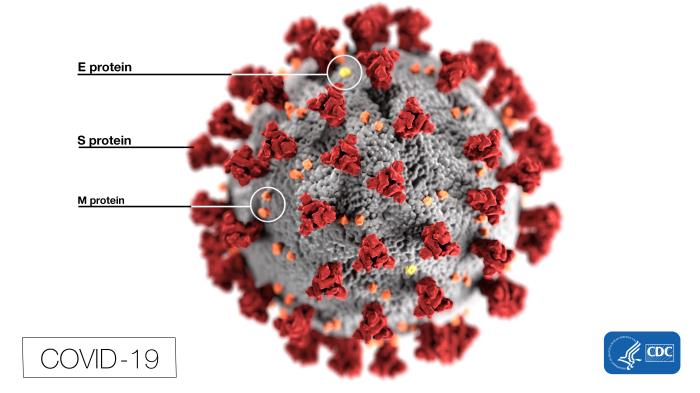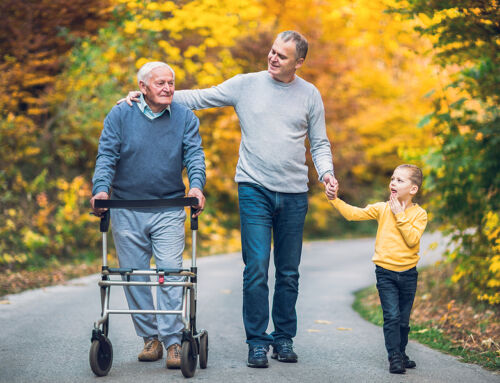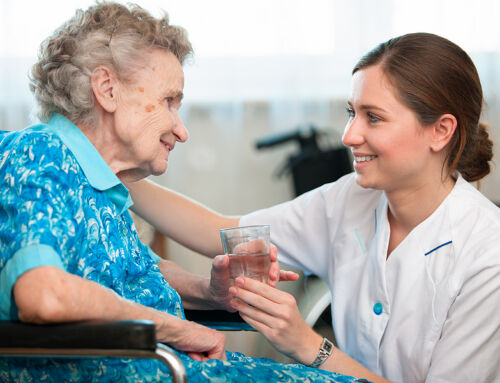I know that many people are feeling anxious about the spread of coronavirus (COVID-19). By now, you’ve probably heard about the outbreak of the virus in a nursing home in Washington state that has turned deadly. I would like to shed some light on how the senior living industry as a whole, including continuing care retirement communities (CCRCs, or life plan communities), is working to prevent and/or contain the spread of virus outbreaks like COVID-19.
CCRCs are well-prepared for this
There was a great article this past week in Senior Housing News that discussed this very topic. The article discussed how, because seniors with respiratory ailments are a high-risk demographic, retirement communities already have to be cautious with the spread of influenza each year.
As a result, the senior living industry, in general, is actually much better prepared to deal with a pandemic than many other industries. Most senior living and long-term care providers have strict protocols in place to help prevent the spread of an illness like COVID-19, should they have a resident or patient who comes down with it. And dealing with the COVID-19 virus isn’t drastically different than dealing with influenza or norovirus (a highly contagious “stomach bug”). It’s largely about communities doubling down on the prevention efforts they already have in place.
In the article, Tom DeRosa, the CEO of Welltower, which is a real estate investment trust that mostly invests in senior housing, explains: “We’re one of the few industries that is talked about how flu impacts us. I don’t think many companies have had to confront this and been asked to quantify what the impact of flu is going to be on their business.”
Among the illness prevention and control protocols that senior living and care providers typically have in place are caregiver vaccination requirements, best practice checklists for flu or other disease outbreaks, monthly illness reports, and regular calls with experts in infectious disease control.
>> Related: How to Know If a CCRC’s Healthcare Center Will Meet Expectations
CCRCs keep seniors healthier year round
CCRCs and other senior living communities have other programs in place that encourage and facilitate senior health too. From educational and exercise programs, to proper nutritional oversight, to safety protocols, to medication management, a CCRC helps keep seniors healthier, which can make them less susceptible to an illness.
It’s also worth considering where you would go for care should you become ill with flu, COVID-19, or any other illness. For those who do not live in a CCRC, a serious illness or acute health issue likely requires a trip to an emergency room or hospital. Who do you find in the hospital? Sick people, of course. During an outbreak of a highly contagious illness like COVID-19, you may leave the hospital with a virus that could make you even sicker than when you went there.
By contrast, those who live in a CCRC have on-site access to a full continuum of care services to deal with an illness — whether acute or chronic. It is quite possible in many cases that they may never even have to set foot inside of an emergency room or hospital, which is especially appealing during a pandemic of a highly contagious virus like COVID-19.
>> Related: CCRCs Help Seniors Stay Active for a Healthier Life
How one retirement community is preventing illness
This past week, I reached out to Kimberly Glover, director of environmental services at Dallas Retirement Village in Oregon, about some of the more specific protocols being used to keep their residents and patients safe from COVID-19. Kimberly, who has a certificate of mastery in infection prevention, shared a lot of great insights.
First and foremost, Kimberly reiterated what most of us already know when it comes to preventing illness. “Handwashing education is huge in our community as this is the best way to help break the chain of a virus.” But Kimberly also shared some other ways that a retirement community can help prevent illness or control the spread of a contagious virus like COVID-19.
“The duties and education of our environmental services team [housekeeping and laundry services] have changed dramatically in the last few years,” Kimberly explains. “Years ago, housekeeping and laundry’s main responsibilities were just what their title indicates: cleaning and washing. This has changed as now we realize that housekeeping and laundry are the first line of defense during virus/cold and flu season. We have the means to stop bugs in their tracks and try to keep them from spreading as much as possible.”
Kimberly continued: “The best way I have found to do this is watch the CDC website’s virus tracking system. It tells me, along with nursing staff, when any particular virus may be in our area. For instance, when I hear that noro-type virus [a “stomach bug”] is in any town or city near us, I immediately put my staff on virus-prevention duty. This means stepping up wipe-downs of handrails to more times per day as well as any high-touchpoints. In our health center, we will use bleach wipes in these areas as these are our most vulnerable residents.”
>> Related: CDC flu map | CDC COVID-19 map | CDC norovirus map
High-tech disinfecting
I was fascinated by another thing Kimberly described as being especially helpful in their community, and it is called the protexus electrostatic sprayer. “It works by hitting the chemical mist coming out of the machine with a static charge,” she said. “This means when those statically charged particles hit a negatively charged surface it then helps those particles spread through the surface into nooks and crannies and places we cannot get with a rag or wipe.”
Kimberly noted that all of these things combined — handwashing education, environmental services efforts, monitoring the CDC’s information, and the electrostatic sprayer — have helped dramatically in preventing viruses from spreading throughout their campus.
For current CCRC residents
If you currently live in a CCRC or other senior living community, it’s understandable if you are concerned about the spread of COVID-19. It appears to be highly contagious, have a long dormancy period during which a person is infected and contagious but not showing symptoms yet, and is causing serious illness in many of the seniors who have been infected (especially those with other health issues like heart disease, lung disease, cancer, and diabetes).
According to the CDC, the best advice for everyone is:
- If you haven’t already, be sure you get your flu shot ASAP so you lower your risk of getting flu.
- Redouble your handwashing efforts, using soap and water for at least 20 seconds, especially after going to the bathroom, before eating, and after blowing your nose, coughing, or sneezing.
- Keep your hands away from your face.
- Avoid close contact with people who you know are ill, and stay home if you are sick.
- Disinfect frequently touched objects and surfaces using a regular household cleaning spray or wipe. (I’m baffled that the CDC doesn’t specifically mention it, but this should include cell phones, iPads, and computer keyboards!)
As an extra precaution, it may be wise to have a three-month supply of any necessary prescription medicines on hand. And if you typically eat in the CCRC dining hall, consider getting a few non-perishable food items to keep on hand in your independent living residence.
>> Related: 4 Ways to Know You’re Ready to Consider a CCRC Move
Going on the offensive to stop the spread of illness
CCRCs across the country are prepared to confront COVID-19 and are treating it much like they would an influenza outbreak since it spreads in much the same way. The protocols they have enacted aim to halt the spread: frequent and thorough handwashing, good cough etiquette (using a tissue, which is then disposed of), and requiring sick employees to stay at home.
Of course, some senior living communities may be better prepared than others when it comes to stopping the spread of a virus. This is one more thing to inquire about during your CCRC research process. Consider asking management what protocols they have in place to keep residents safe from a pandemic or stop the spread of a virus outbreak.
> For the latest information on COVID-19, visit the CDC’s website.
Photo credit: Centers for Disease Control and Prevention, Alissa Eckert, MS; Dan Higgins, MAMS

FREE Detailed Profile Reports on CCRCs/Life Plan Communities
Search Communities






